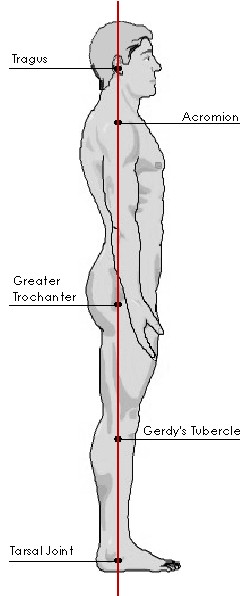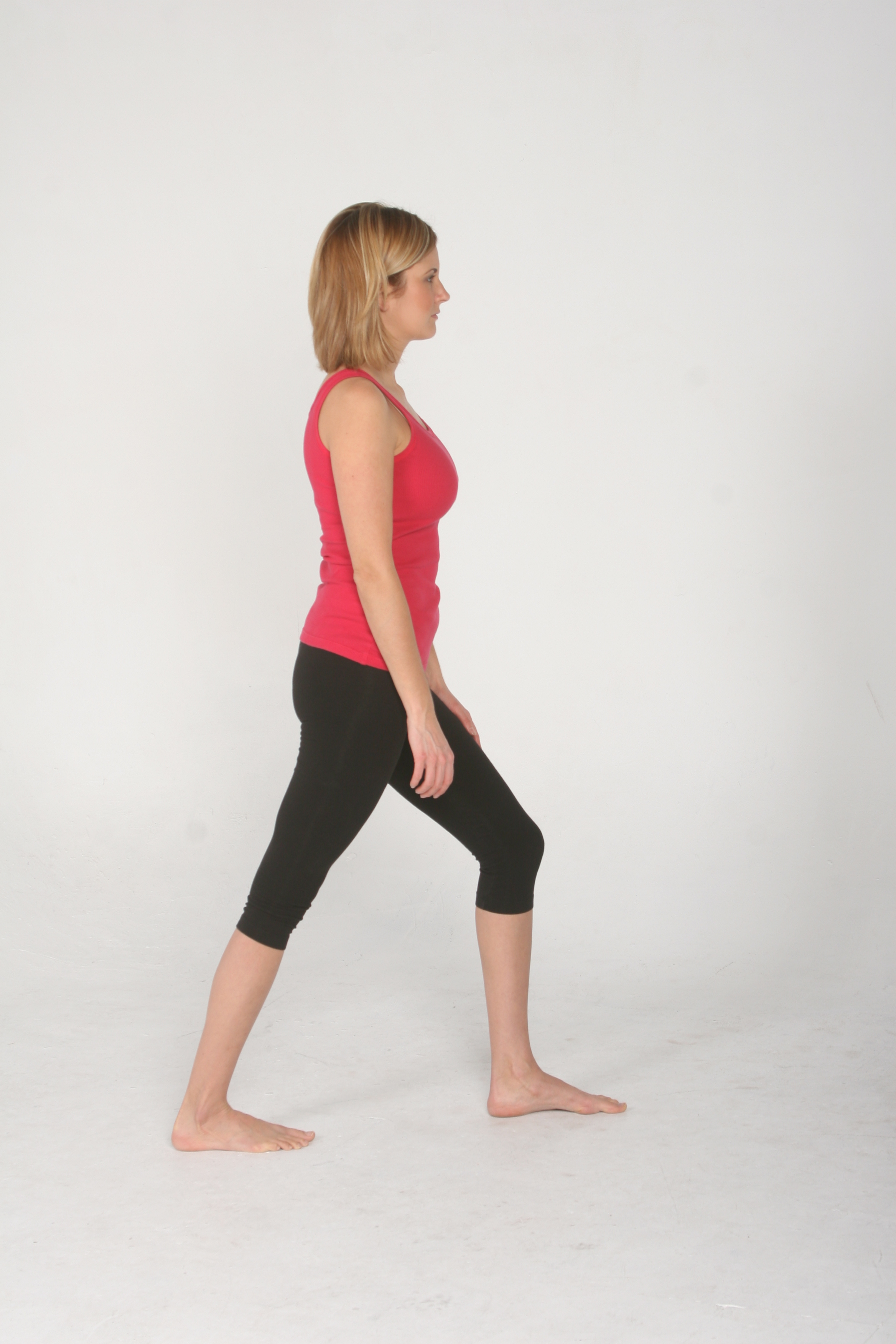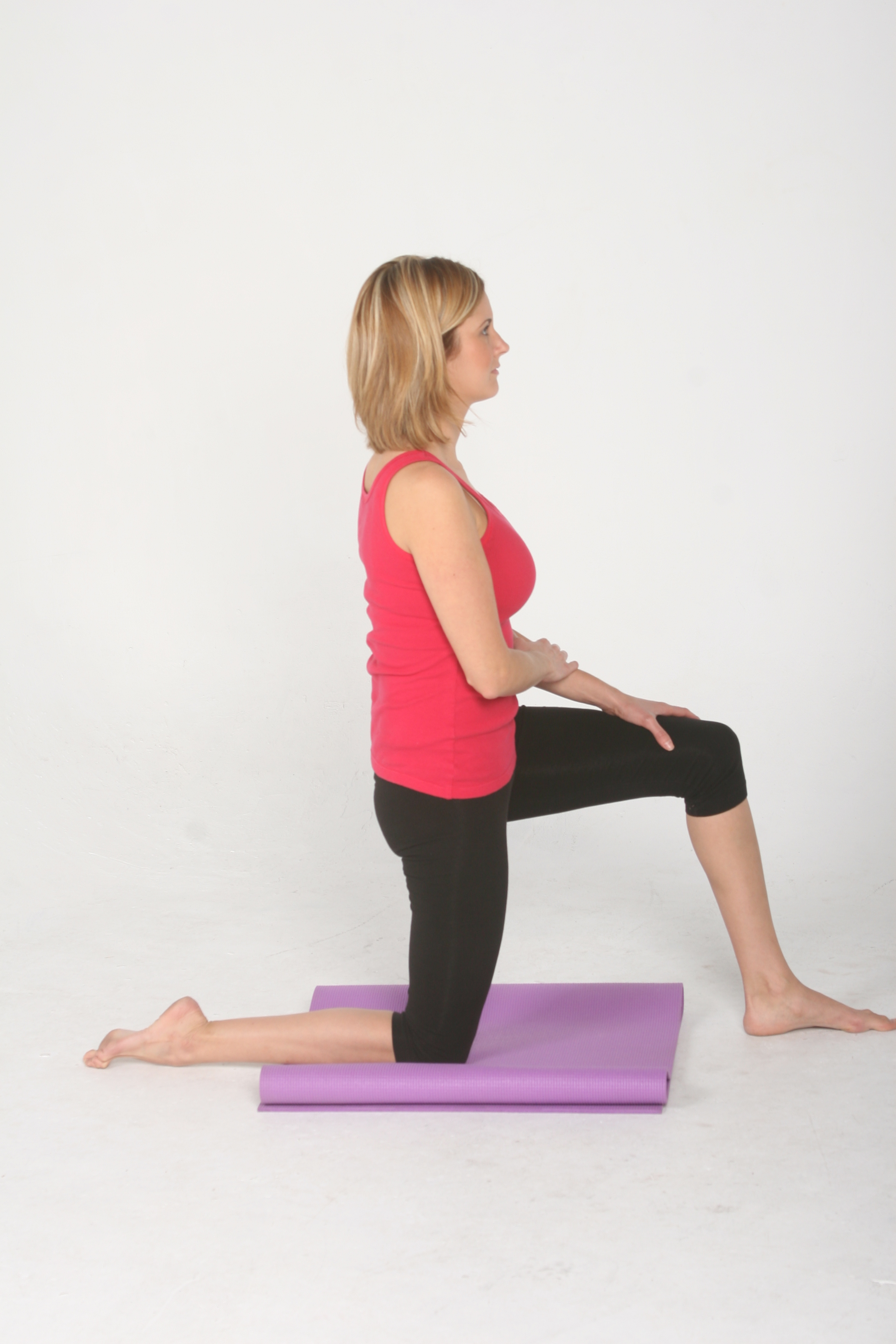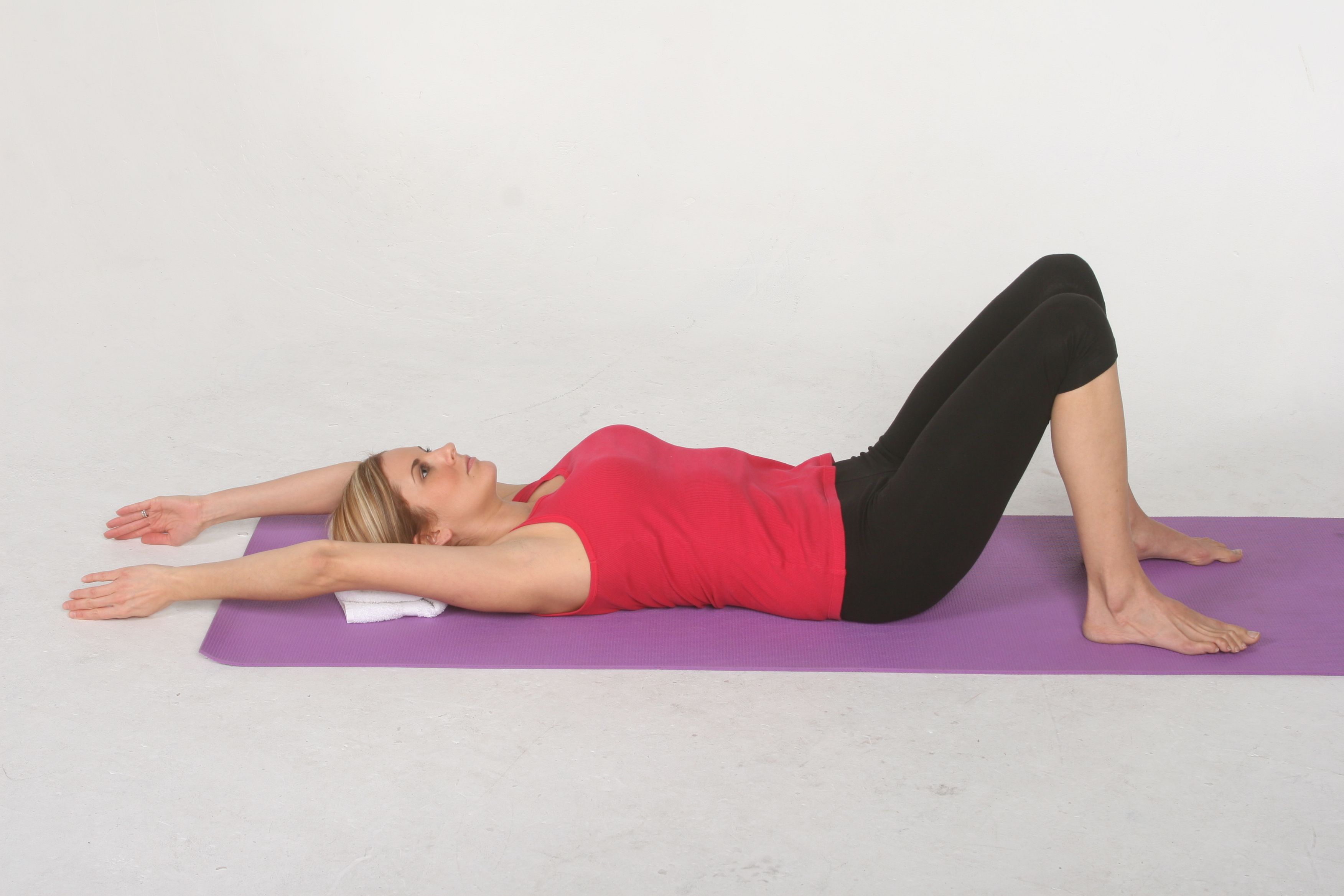Posture refers to the position the body assumes during various activities such as sitting, standing or lying down. Here’s an overview of what ideal standing posture looks like, a quick self-assessment of your own posture, and three exercises that can be used to help improve standing alignment so that you do not become a statistic of bad posture and back pain.
Good Postural Alignment
Good standing posture is important because it ensures that the body can withstand the force of gravity with little adverse stress to the muscles and bones. When a person is in an optimal standing position, the following anatomical landmarks should all be in vertical alignment (when viewed from the side): the tragus of the ear, the acromion of the shoulder, the center of the hip, Gerdy’s tubercle (just below the knee) and just below the ankle bone (see Figure 1 below).
Figure 1: Optimal Standing Posture
Bad Posture and Back Pain
To assess your own posture, stand against a wall in bare feet with your heels, buttocks, shoulders and head touching the wall and your feet straight. Pay attention to where the weight is in your feet. If you are standing in good alignment, your body weight should be positioned over your heels. However, if you feel pressure in the front of your feet and toes, this indicates that your body weight is falling forward. Consequently, you have to push down with your toes to keep balanced. This compensation will cause your calf muscles to tighten and affect the alignment of your feet, ankles and knees.
Now slide your hand behind your back to evaluate the space between your lower back and the wall. If there is an acceptable degree of arch in your lower back then you should only be able to slide your fingers into the space. If there is enough space for you to slide your whole hand or arm between your back and the wall, then your lower back is arching too much. As a result, many of the muscles that attach to the lower back will be adversely affected. This can lead to dysfunction and chronic lower back pain.
Lastly, try to decrease the arch in your lower back by tucking your pelvis under (i.e., posterior tilt). You may notice that when you do this your shoulders round forward away from the wall. This indicates that the muscles of your shoulders and upper back are weak and unable to keep your shoulders back to the wall when you remove the excessive arch in your lower back. This weakness in the upper back and shoulders can lead to shoulder pain and place more stress on the structures of the lower back (as they must compensate for the lack of strength in the upper back).
Exercises
Here are three examples of corrective exercises you can use to help improve your posture and eliminate pain and dysfunction caused by the imbalances mentioned above.
Calf Stretch
Tight calf muscles can lead to bad posture. Performing a calf stretch can help realign the posterior calf muscles (e.g., soleus and gastrocnemius) to help shift your body weight back into your heels when standing.
Calf Stretch (with activation of tibialis anterior)
Stand in a split lunge stance (make sure foot is aligned straight front to back) and push the heel of the back foot into the ground. Hold for 30 seconds each side.
Hip Flexor Stretch (with activation of gluteus maximus)
The hip flexor muscles run from the lumbar spine across the pelvis and attach to the top of the leg. Stretching these muscles enables the hips to extend (i.e., move forward) under the spine so the lower back does not have to overcompensate by arching excessively to hold the torso upright.
Hip Flexor Stretch (with activation of gluteus maximus)
Kneel with one leg in front of the other. Posteriorly tilt the pelvis (i.e., tuck under) until you feel the glutes (i.e., butt muscles) of the back leg contract. Keep the torso erect without arching the lower back excessively. Hold for 30 seconds each side.
Straight Arm Raise
Strengthening the muscles of the upper back can teach the body how to utilize the thoracic spine (i.e., upper back) to lift the torso upright so the lower back does not get tired and overworked.
Straight Arm Raise
Lie on the ground with your knees bent. Raise your arms overhead until they reach the ground. Pull you arms down into the floor without arching your lower back, shrugging the shoulders or bending your arms. Hold for 20 seconds and repeat 3 times.
Assessing your posture on a regular basis can help you see if parts of your body are compensating to keep you upright. Addressing any imbalances you find with corrective exercises will help improve your posture and decrease your pain.
To learn a complete corrective exercise process for assessing posture and improving alignment with corrective exercise check out The BioMechanics Method Corrective Exercise Specialist course or click on the image below.




